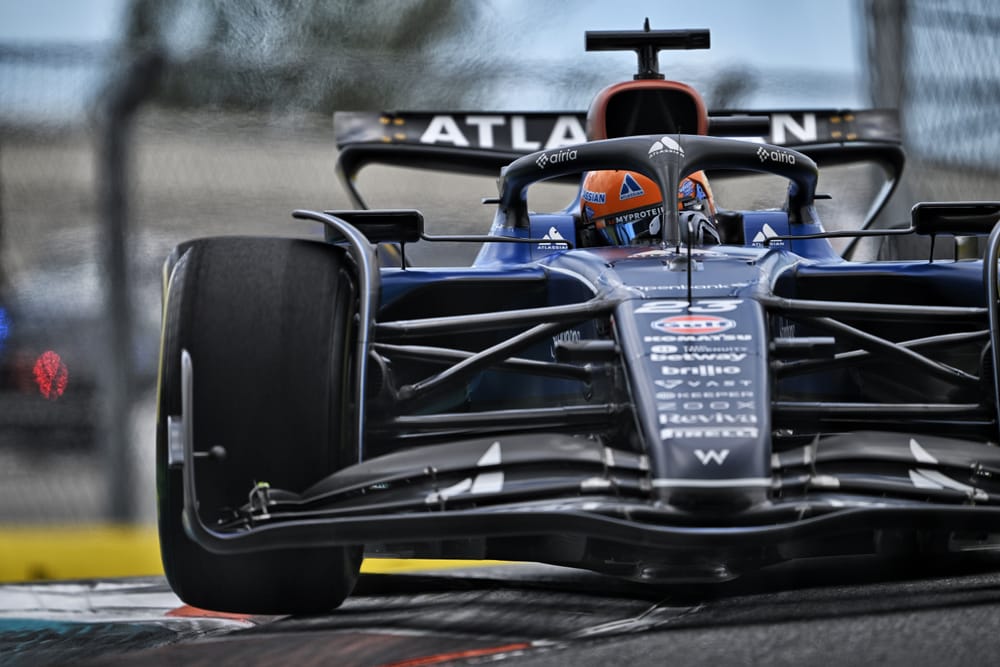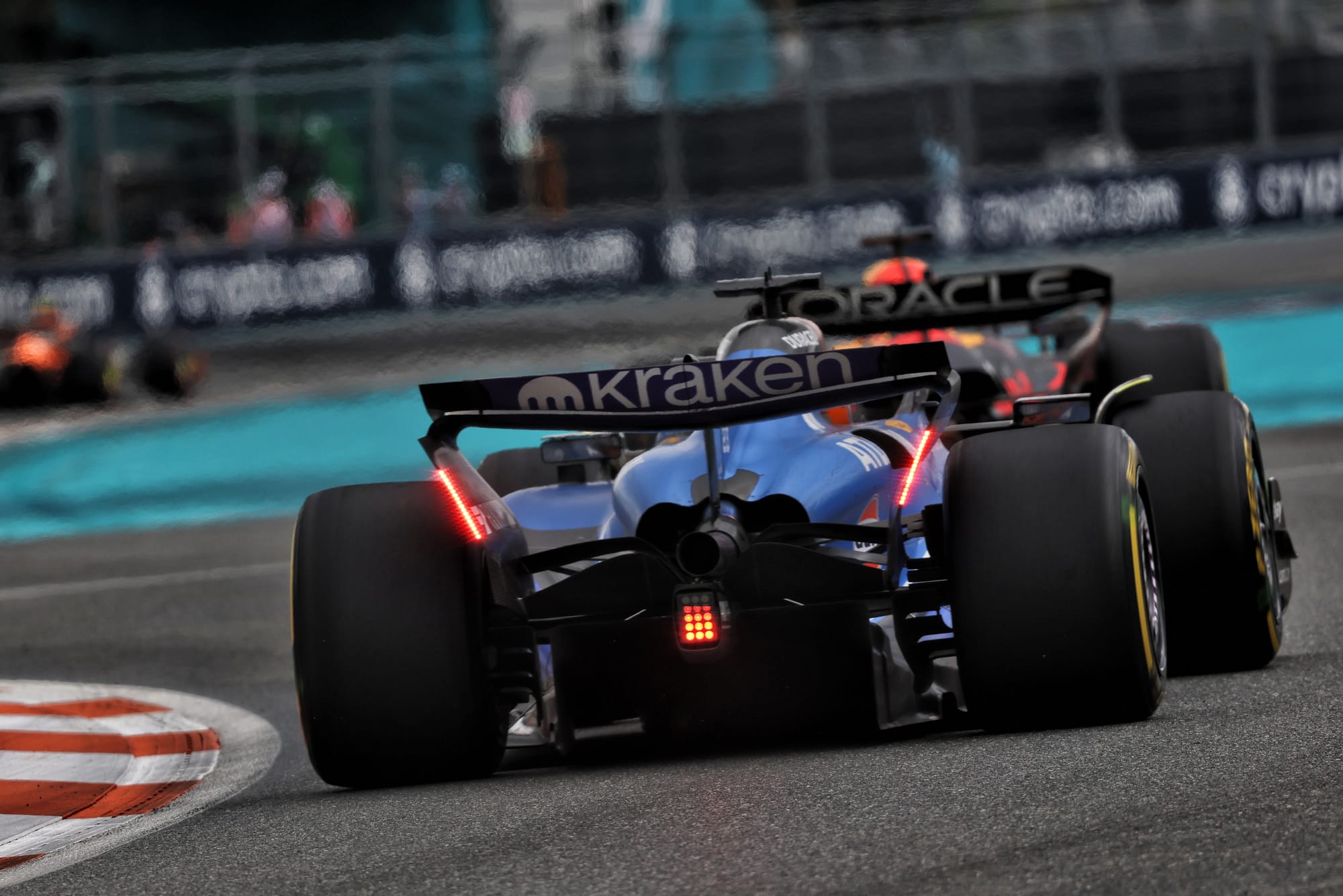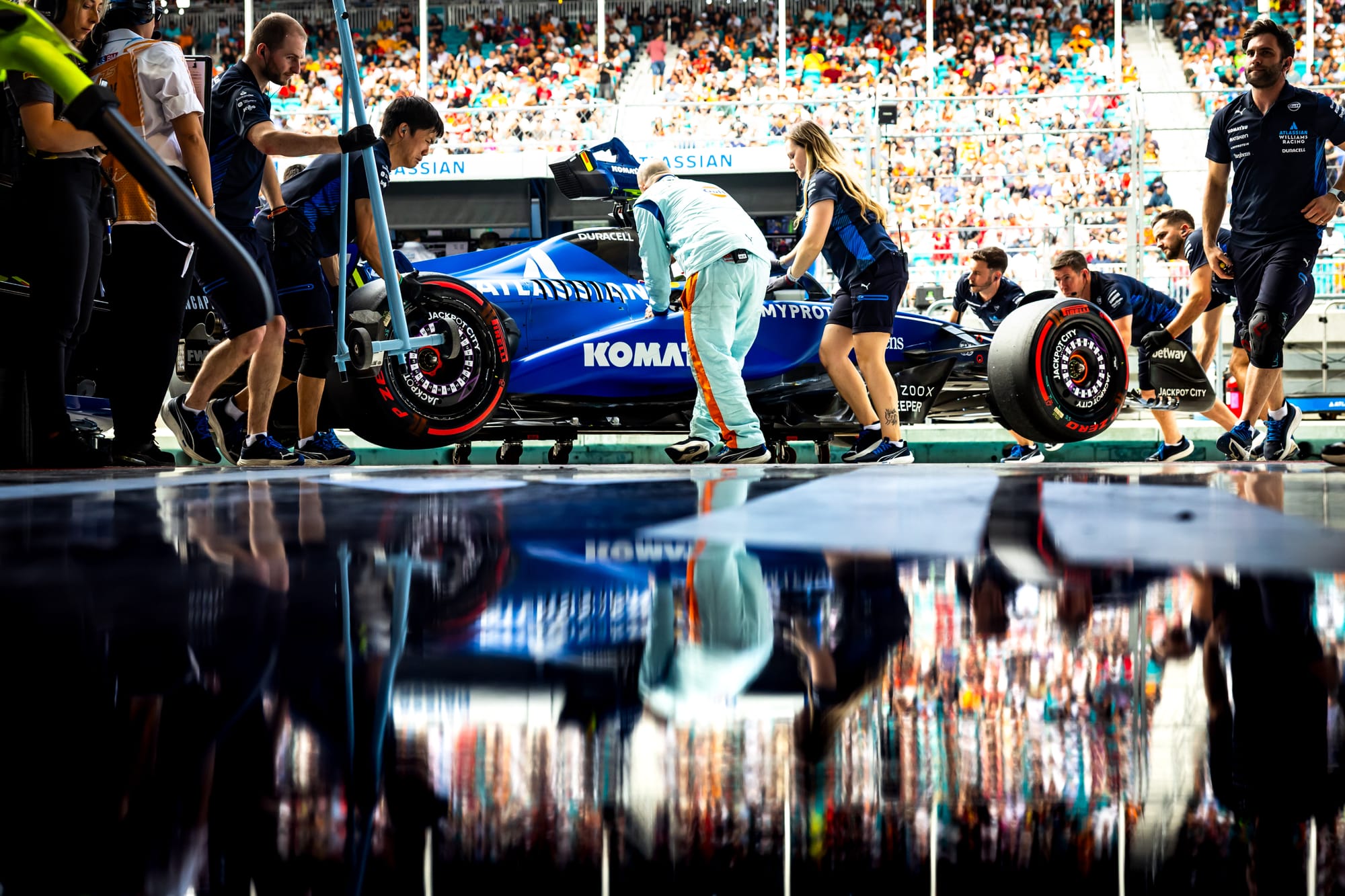Williams has started a Formula 1 season better than it has for almost a decade - but must stick to its guns and abandon it, if it is to really build on the first big public sign its revival is real.
Fifth in the championship with a 209-point deficit to leader McLaren already after just five races might not seem like much to write home about if a team ultimately has title-winning ambitions.
But context is key. This is more points than Williams has had after five races since 2016, when it was a sporadic podium challenger, and its current tally sits just below that year's in terms of points-per-race: 6.57 in 2016, versus 6.17 in 2025.
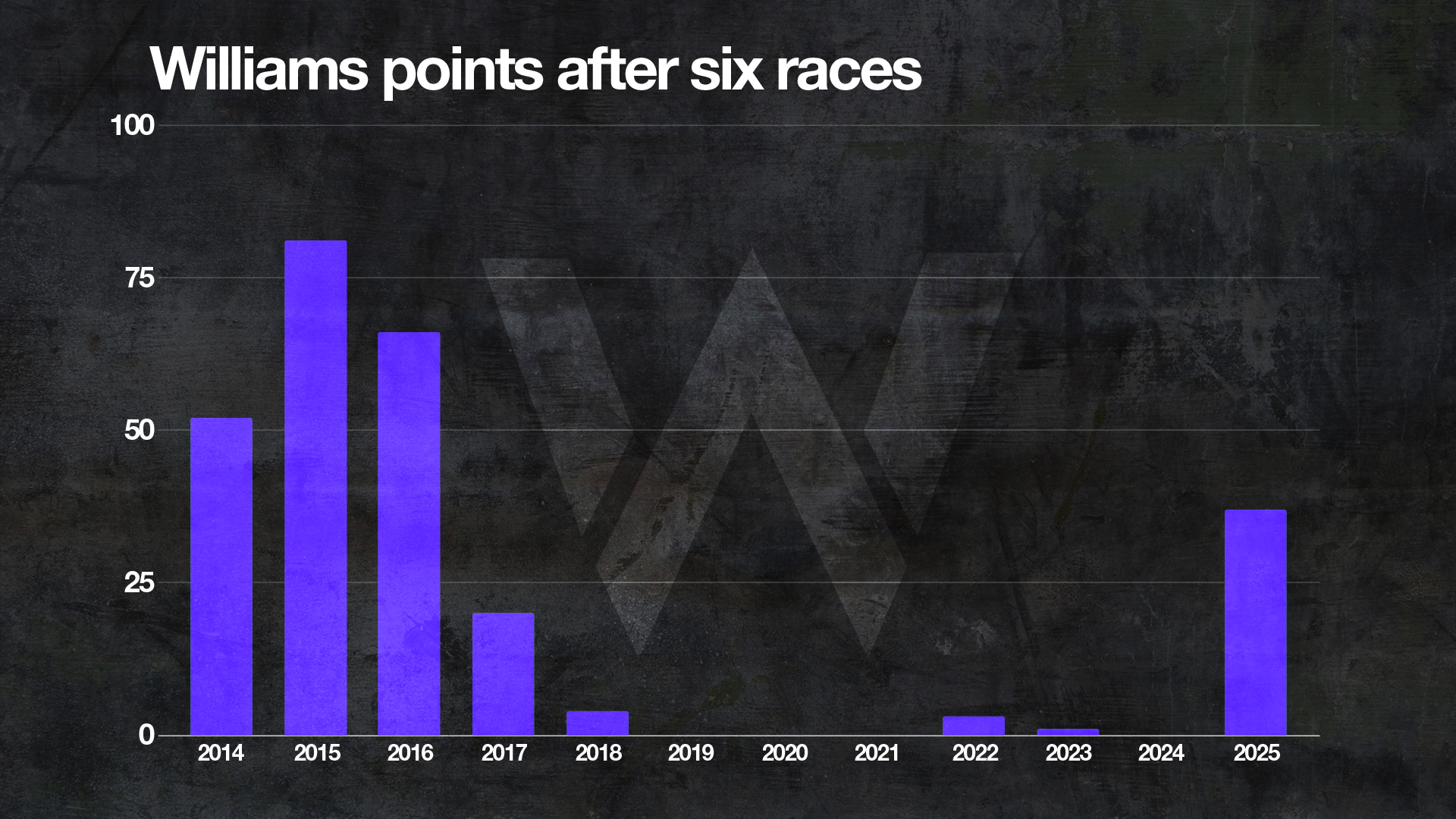
And the numbers are not everything. Alex Albon beat both Ferraris and a Mercedes on pure pace in Miami, has sporadically picked off a weak second Red Bull, and legitimately outqualified Ferrari back in the season opener in Australia as well.
On its day, this year's Williams is more than just best of the midfield: it's sniping at underperforming giants. No more so than the last race in Miami, where Williams was within four tenths of pole position and comfortably clear of its usual rivals.
"It surprised us, for sure," Albon admitted after finishing fifth on merit in Miami.
"We've been thinking about it in every debrief so far, why are we good this weekend, what is it about this track that really suits us? And we understand it for the most part.
"This track doesn't have corners that we don't like. From the first lap in FP1 the car was in a good place and we could build very quickly, which in a sprint race weekend is very important."
That track suited Williams perfectly as it lacked any nasty, long corners that combine steering lock with braking - the type that Williams has been caught out by for years.
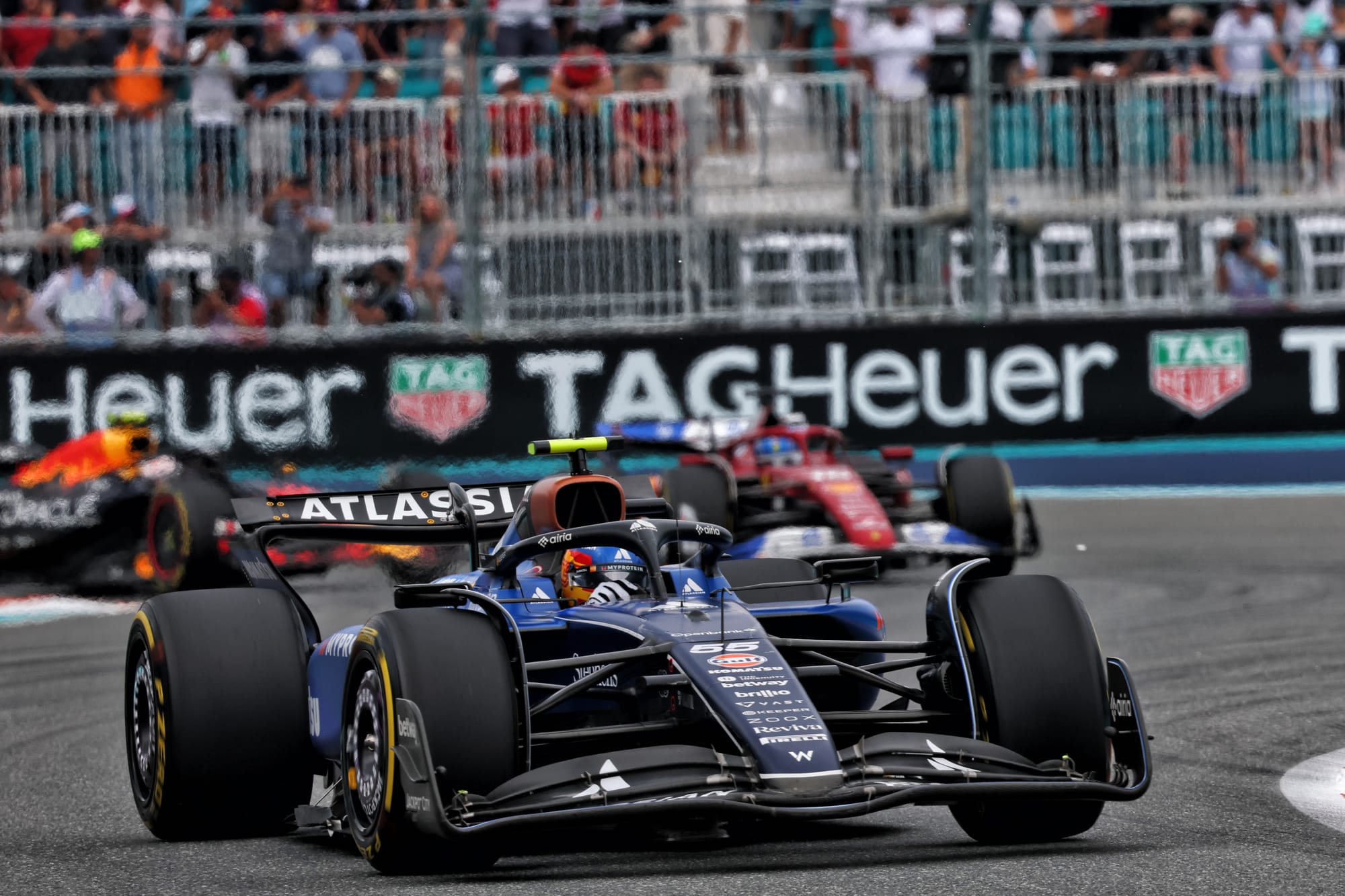
So, this was at the very peak of what the car is capable of. But that peak is clearly very high for a midfield team. And 2025 signing Carlos Sainz reckons the baseline car is so good, Williams could actually close the gap to the front even further this year if it developed the right areas.
Unfortunately, that's not the plan. Team boss James Vowles has made it very clear he is willing to sacrifice this year to get the future right, given the massive rules overhaul coming in 2026 is a great chance to leap up the pecking order.
And the drivers are behind that as much as their inherent, competitive impatience allows. Sainz said the long-term vision is partly why he joined. And Albon, who has suffered through some Williams lows and admits he is "enjoying this year a lot", concedes the temptation to focus more on 2025 than intended is there but "we're sticking to our guns and we want to make a big step for next year".
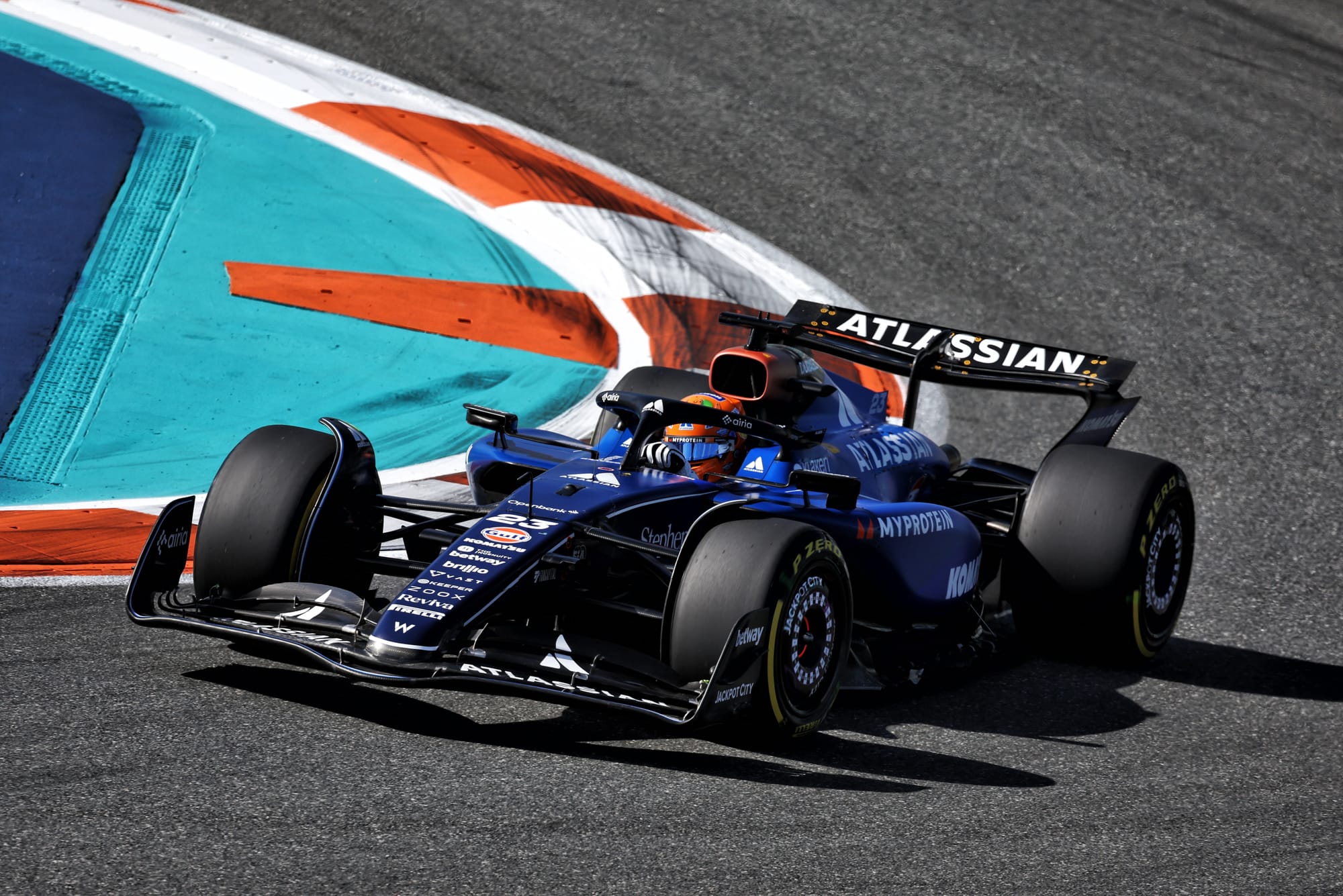
"You can look at it both ways," Albon said in Miami. "You can look at it like, 'Do we have a gap now that we don't need to focus on this year?' or, 'Do we need to keep going?'.
"Realistically, we're not going to get P4 in the constructors', so the focus is trying to keep the P5. And we have likely a different upgrade plan to other teams this year - we are focused on next year as well."
Under Vowles, Williams is determined not to get caught out chasing short-term gains when it has desperately needed patience, investment and long-term planning to permanently escape the depths it descended to over the previous 10 years.
There's a balance most teams are trying to strike between aggressively developing for next year's all-new rules while continuing to bring improvements to this year's car early on, and Williams is all-in on 2026 in terms of active development.
So how much is Williams sacrificing to do that? Well, on Miami form, you would say the potential to consolidate fifth in the championship and maybe even make some inroads on any faltering giants. On other 2025 weekends you would say it is giving up a definite position at or close to the head of the midfield and could struggle to score points at all by the end of the year.
The payback for this could be huge in 2026 and for the years to come, assuming Williams gets the new rules right. And it also needs to have faith in why this year is going so well, too.
This is not some out-of-the-blue leap forward that Williams must grasp because it cannot expect to get the chance again, even though it does look like a drastic change in fortune for a team that has been in the bottom two in the championship in five of the last seven seasons (including last year) and not finished higher than seventh in that time.
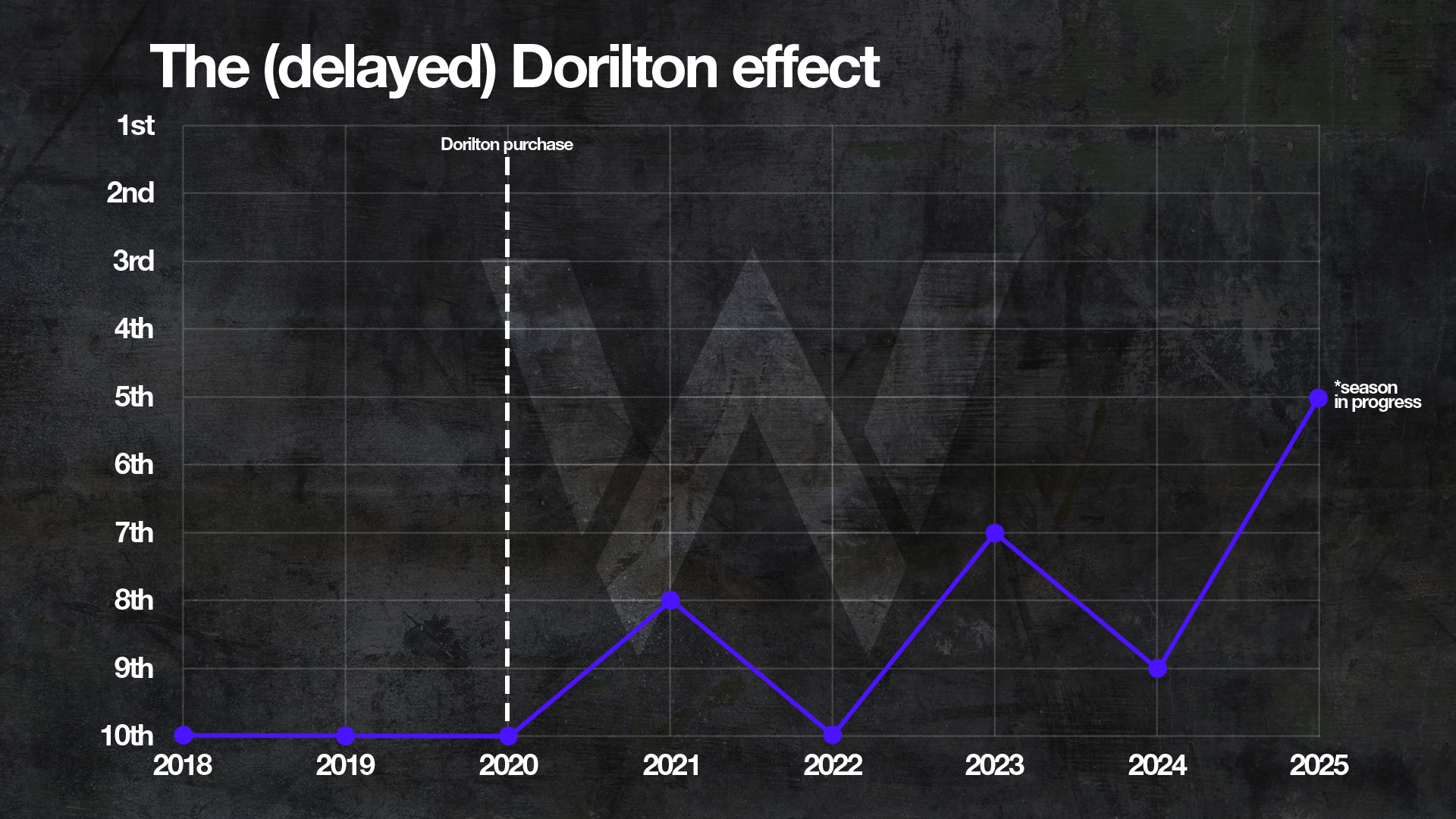
Since Williams was sold by its founding family to investment company Dorilton in 2020, the team has had massive investment and undergone a lot of change in its senior leadership, driver line-up and way of working.
Setting a new foundation has taken a lot of time but it finally appears to be working under the current regime headed by Vowles and with ex-McLaren, Ferrari and Renault man Pat Fry overseeing the technical department.
Re-signing the impressive Albon last year then convincing Sainz to join after his Ferrari exit, plus a major recruitment drive, have been big milestones.
But Vowles does not believe Williams can realistically be a frontrunner again until 2027 or 2028 because it is coming from such a low base. And as Williams had struggled to make an obvious leap before this year, to the outside world the project has had a lot of convincing talk without the progress on-track to back it up.
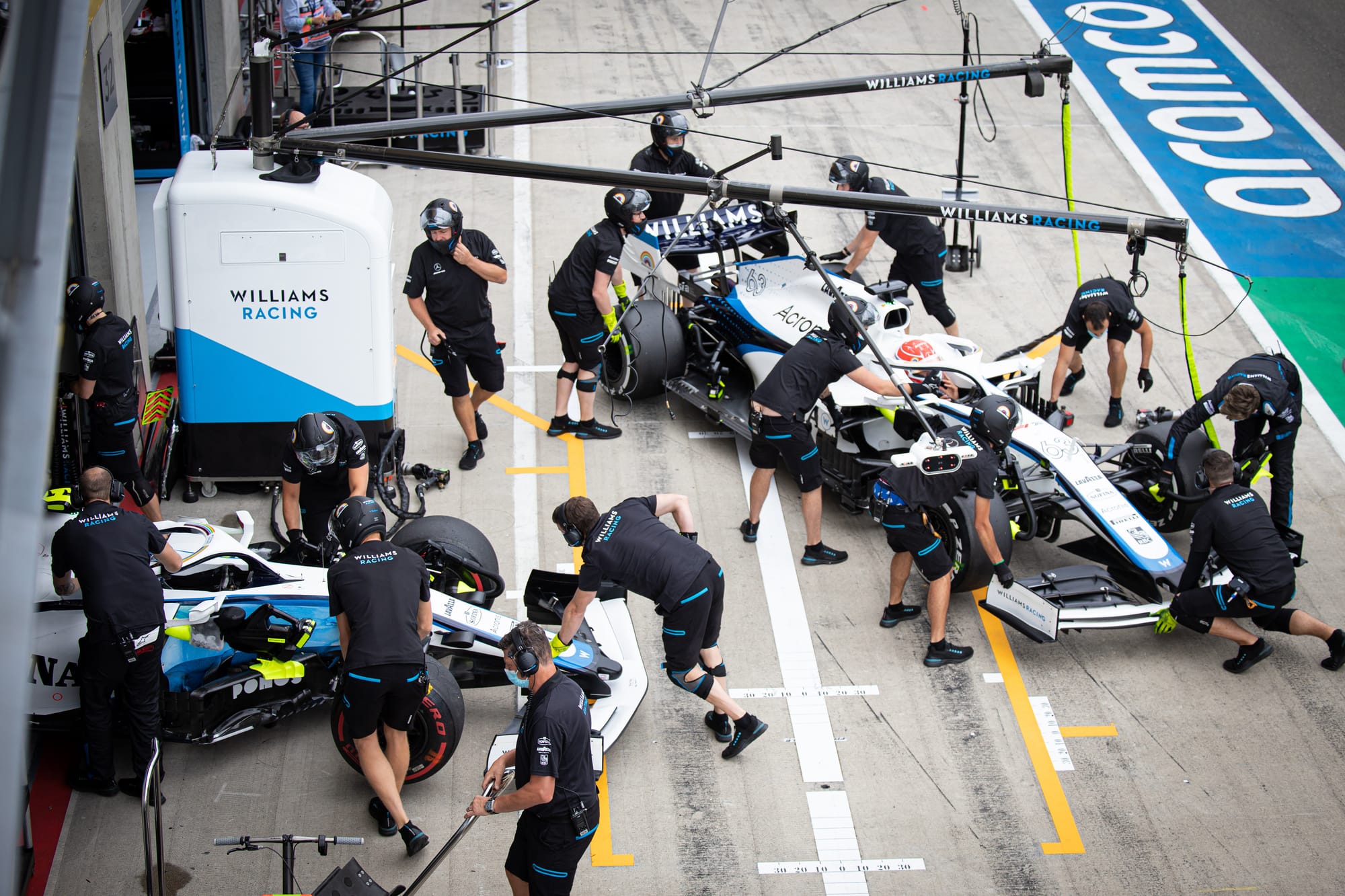
Almost anything would have been an improvement on a point-less 2020 or even the two years prior to that, so the early Dorilton years were an encouraging step into respectable lower-midfield territory but hardly conclusive proof of a revival.
Especially as there was a return to last place in the championship in 2022, and a disappointingly low yield last year - ninth in the standings with just 17 points, saved only by the hapless Sauber team.
But Williams underperformed quite considerably last year. The baseline car performance was reasonable but disguised early on due to running too heavy and early upgrades being held up. Both were consequences of a major overhaul in how Williams designed and built its car, which put it behind schedule. The situation was exacerbated by a string of big early-season crashes, a mid-season driver change, then a return to managing a lot of crash damage late in the year.
Want even more F1 content? Join The Race Members' Club on Patreon and take advantage of our limited-time offer to get 75% off your first month!
All of this overshadowed the fact Williams had anywhere between the fifth- and ninth-fastest car at different points, and should have scored a lot more points than it did.
In that respect, 2025 is not some sudden transformation. Progress has been more gradual than it appeared and this season is not "desperately" better than Vowles expected.
"There was so much we weren't doing right, and are still not doing right today in Williams, that what I actually like out of it is that we're demonstrating that there's some good foundations now in place that's how you build a car that’s at least half competitive," Vowles says.
"It [this season] is about where I was hoping to be. I'd almost argue that last year we underperformed."
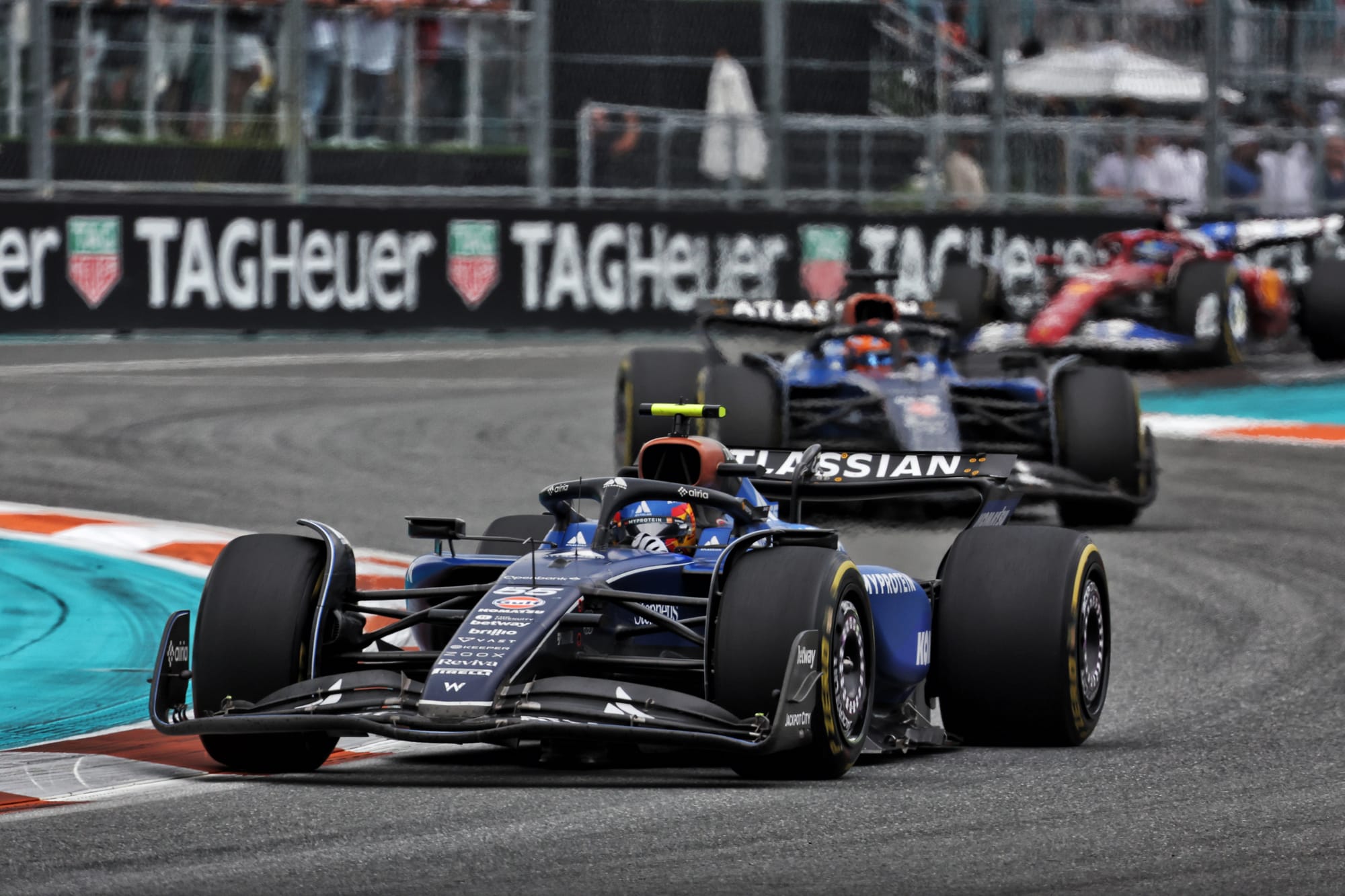
Now Williams is benefiting from what Vowles calls the carry through of last year's progress, and a lot of aspects of the new era finally coming together.
Finishing fifth this year would be a nice symbol of progress, if nothing else. Although the team is setting different targets based on itself rather than others.
"It's hard for you in the media, and it's hard for fans as well, to understand why we're doing this," says Vowles.
"But our targets are actually around introduction of infrastructure, technology, systems, KPIs [key performance indicators] internally: how long it takes to build a front wing, how expensive it is to build a front wing, how much we do internally, externally, how long it takes to design, how many loops we do, how many windtunnel hours it takes to add X performance.
"Those are the KPIs that then drive you towards championship material. And the results on track are just an output from it.
"That's why I'm not focused on the results on track, because as with '25 and I think as with '26, it will move forward. But if you get fixated on that, that's just a relative game to your competitors.
"This is data driven. If you keep changing these variables, you will just build a faster and faster car every year, and eventually you outdo your competitors.
"That's why it's driven that way, and almost to a certain extent, if I said to you, our goal this year is, doesn't matter, make a number up, P8...who cares?
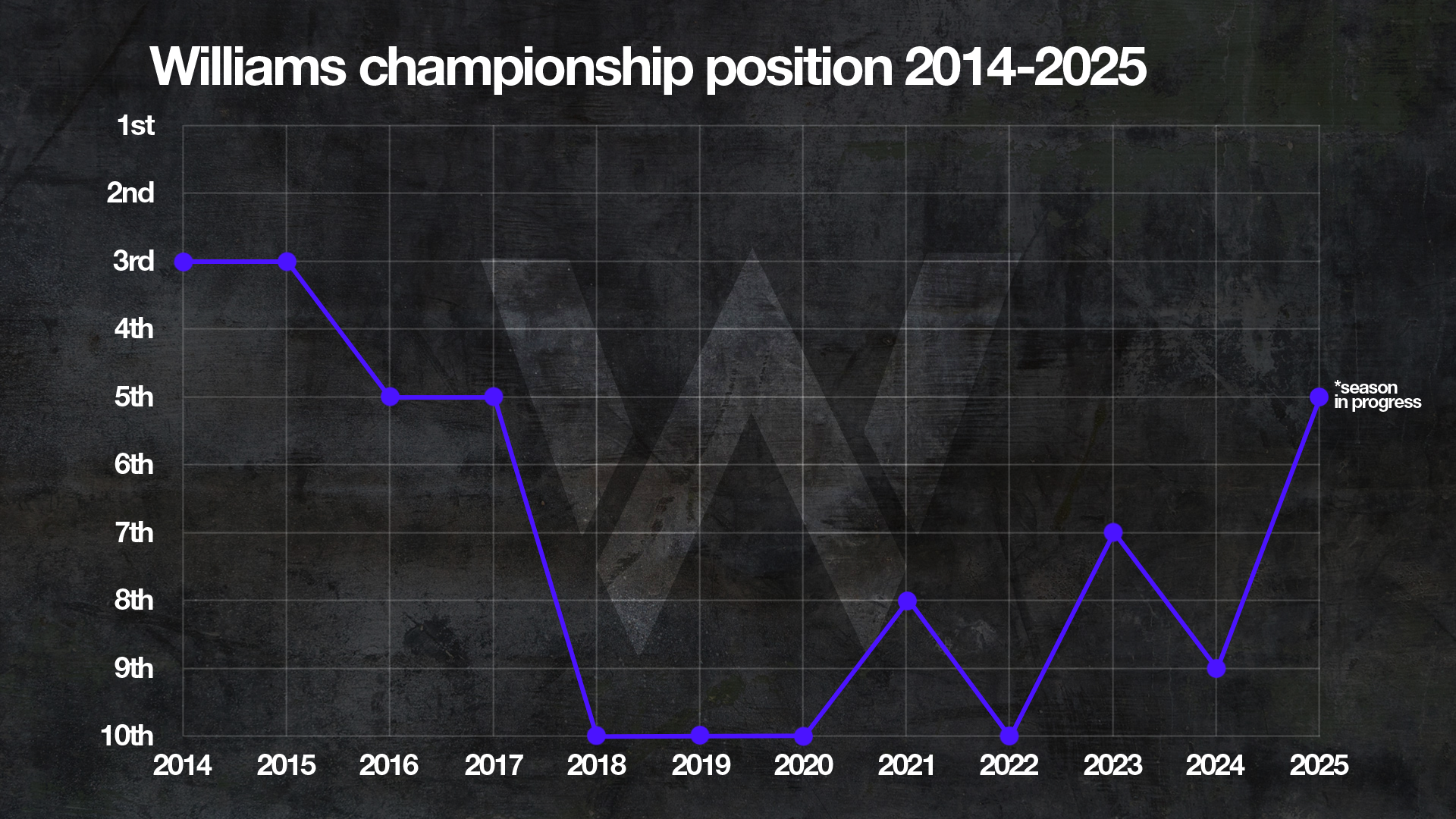
"We'll probably beat that, but that's a moment in time, whereas what we're defining here is a pathway that leads us back to winning championships."
That's why Vowles keeps banging the drum that this is about longer-term progress, and obsessing over isolated steps forward or backwards is a mistake. Williams's path to the front, if it ever gets back there, will not be completely linear. The trend will only be observed once it happens.
Of all the midfield projects with grand designs - Williams, Aston Martin, Alpine, Sauber and Audi - this has always seemed the most cohesive. Now it seems to have some on-track momentum to underpin it.


